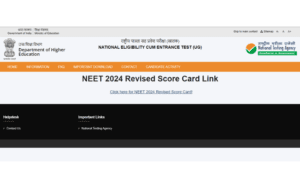
Education Sector Advertisement Guidelines: Student Well-being
The education sector is witnessing a significant transformation with the introduction of new advertisement guidelines aimed at promoting the mental and physical well-being of students. The Advertising Standards Council of India (ASCI), a voluntary self-regulatory organization, has recently revised its norms to address the prevailing issues in the sector. In this article, we will explore the key highlights of these guidelines and their impact on educational institutions, along with the projected growth of India’s advertising industry.
Revised Guidelines: Embracing a Positive Approach
The updated guidelines emphasize the importance of substantiating claims made in advertisements by educational entities with relevant evidence. However, they go a step further by promoting a positive and inclusive portrayal of students. Stereotyping based on gender or appearance is strictly prohibited, ensuring that no student feels marginalized or discriminated against due to such factors.
One crucial aspect the guidelines address is the depiction of students who score low in exams. Previously, such students were often portrayed as unsuccessful or failures, further contributing to their demotivation and depression. The revised norms seek to change this narrative and encourage a more empathetic representation of these students. Advertisements must now avoid depicting them as demotivated, depressed, or unappreciated by their peers or family. Instead, the focus should be on providing support and encouragement to help them overcome obstacles and achieve their goals.
Prioritizing Student Well-being: Discouraging Unhealthy Practices
The new guidelines also aim to discourage the promotion of unhealthy practices among students. Advertisements should refrain from showing students sacrificing sleep or meals for the sake of studying, as this normalizes behaviors that can have detrimental effects on their well-being. Educational institutions should prioritize the holistic development of students, emphasizing the importance of a balanced lifestyle that includes adequate rest and nutrition.
Another significant aspect covered by the guidelines is the creation of a false sense of urgency or fear of missing out. This practice can intensify anxiety among students and parents, leading to unnecessary stress and pressure. By discouraging such tactics, the ASCI seeks to ensure a more positive and mentally healthy environment for students.
Challenging Stereotypes: Promoting Gender Neutrality
The revised guidelines also address the issue of gender stereotypes in educational advertisements. Advertisers must avoid associating certain subjects with a particular gender, promoting inclusivity and equality. While an advertisement may feature students of any gender, it must not suggest that certain subjects are exclusively associated with one gender alone. This step toward gender neutrality encourages equal opportunities for all students and breaks down societal barriers.
Industry Response and Future Outlook
Rohit Kumar Singh, the Secretary of the Ministry of Consumer Affairs, highlights the importance of maintaining the sanctity of advertising in the education sector. Misleading ads not only violate the new guidelines but also infringe upon the Consumer Protection Act. The government is determined to take all necessary measures to protect the citizens from such misleading practices.
Manisha Kapoor, CEO and Secretary General of ASCI, emphasizes the significance of the updated guidelines in ensuring the well-being of students. Education can be a highly pressurized environment, and advertising should not perpetuate or exploit this problem. By promoting a positive and supportive atmosphere, the guidelines aim to create a nurturing space for students to thrive.
India’s advertising industry is poised for significant growth, with ad spends projected to increase by 15.5% compared to the previous year. The industry’s valuation is expected to reach ₹1.46 lakh crore, and digital spends are estimated to grow at a remarkable 20% CAGR. This growth indicates the increasing importance of the education sector in advertising, underscoring the need for responsible and student-centric marketing practices.
Conclusion
The revised advertisement guidelines for the education sector represent a significant










